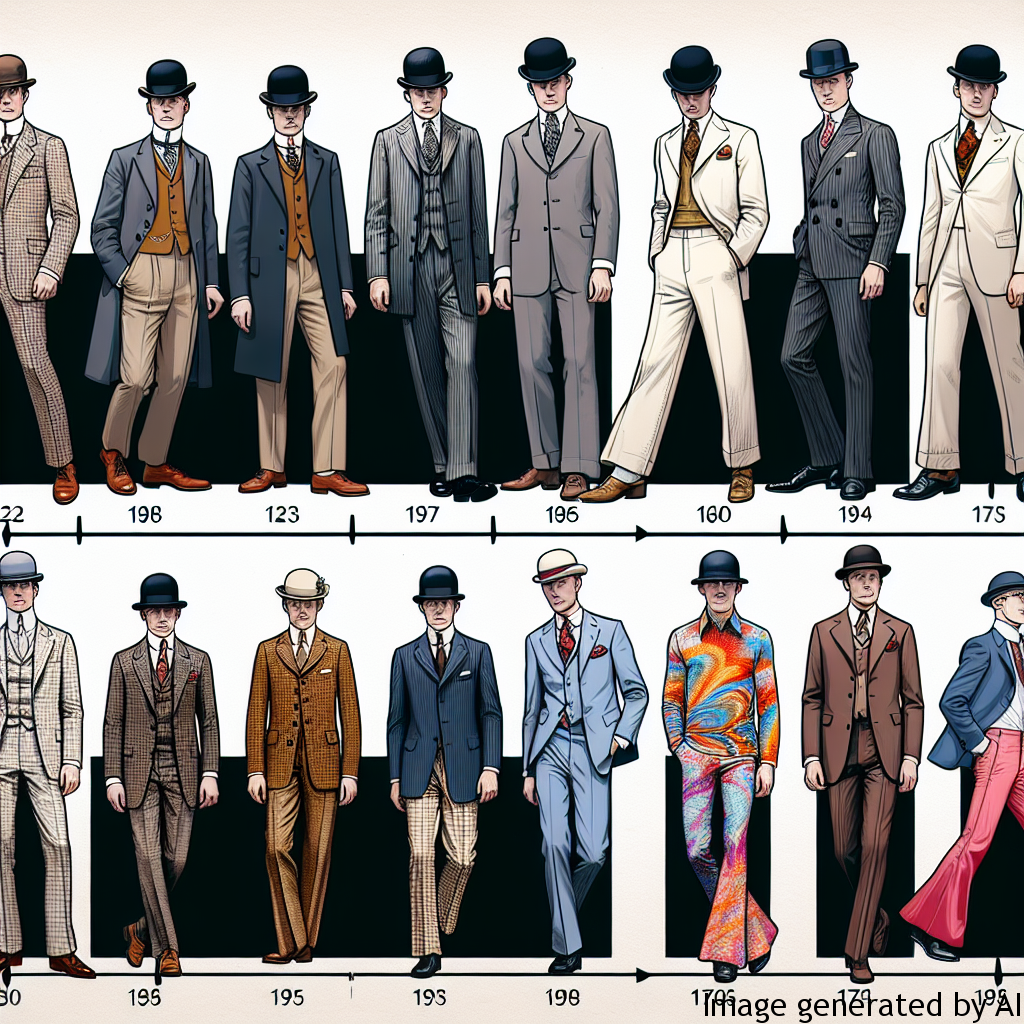Introduction
The fashion trends of the 20th century brought vast transformations in the world of men’s clothing, reflecting significant political, social, and cultural shifts. The century was marked by a momentous revolution in men’s fashion, from the introduction of casual-wear to the emergence of country-specific trends that defined style parameters. These changes considerably influenced the representation of masculinity, playing a fundamental role in restructuring conventional gender expectations that exert considerable psychological influence on men.
Description of Gender Expectations and Their Impact on Men’s Mental Health
Established Gender Expectations
Throughout the 20th century, culturally constructed gender norms dictated the way men should behave, dress, and communicate. Men were expected to live up to the societal standards of ‘machismo,’ ‘toughness,’ and ‘stoicism,’ reflected in the clothing they wore – often serious, sturdy, and straight-laced to exemplify solidity and practicality.
Impact on Mental Health
However, the pressure to conform to these traditional masculine norms can have a detrimental impact on men’s psychological health. Men often feel pressure to suppress their emotions, leading to increased stress, anxiety, and other mental health issues. Moreover, the societal expectation for men to always appear strong and unemotional inhibits them from seeking help for mental health concerns, thereby exacerbating their emotional problems.
Examples of How Gender Roles Can Affect Men’s Lives
The societal focus on ‘manliness’ often leads men to pursue professions deemed masculine, sometimes at the cost of their actual interests. They are often discouraged from pursuing careers in the arts or fashion, fields typically perceived as feminine. Men were also expected to wear traditionally masculine attire, such as suits and ties, regardless of their personal style preferences.
As the norms around men’s fashion became more flexible throughout the 20th century, men began to express their identities by challenging the past sartorial expectations. Subcultures such as punk and grunge introduced an alternative to the buttoned-up look, providing men more options to express different facets of their personalities.
Tips for Improving Mental Health Considering Gender Roles
It’s essential for men to recognize that societal norms should not define their identities. They should feel free to pursue professions they love and dress in a way that reflects their unique personalities. Furthermore, seeking professional help when struggling with mental health issues is not a sign of weakness. Society is gradually becoming more understanding and less judgemental about such matters.
Conclusion
In the 20th century, the radical transitions in men’s fashion mirrored a pivotal shift in society’s perceptions of masculinity. The progression from the rigidly formal clothing to more relaxed and expressive styles offered men the freedom to redefine their personal identities and challenge traditional gender norms. However, the lingering effects of past expectations continue to influence men’s mental health, reinforcing the necessity to break free from such stereotypes to achieve holistic well-being. Men’s fashion is a powerful testament to this ongoing transformation, advocating for a more inclusive, diverse understanding of gender roles in society.

